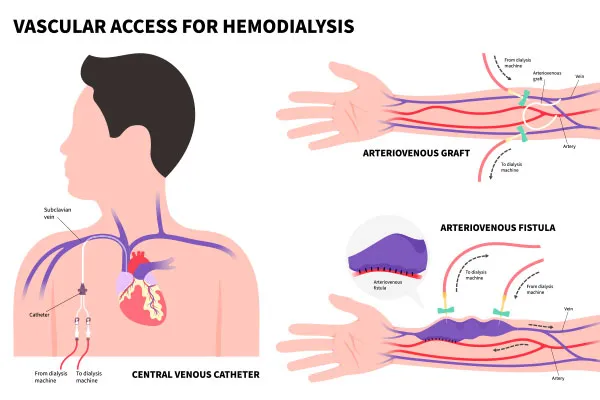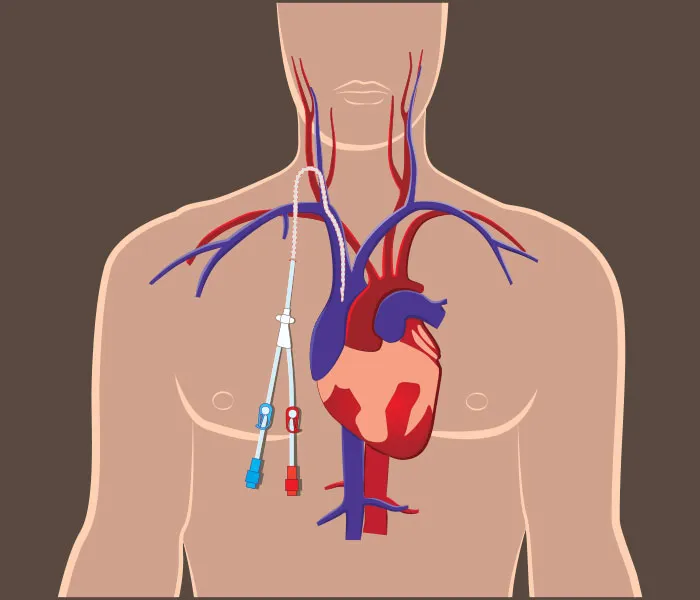Permcath Insertion for Hemodialysis in Chandigarh
What is Permcath Insertion for Hemodialysis?
Permcath insertion is a specialized medical procedure used to provide long-term vascular access for hemodialysis in patients with kidney failure. In this procedure, a soft, flexible catheter—known as a Permcath or tunneled dialysis catheter—is inserted into a large central vein, most commonly the internal jugular vein in the neck. The catheter is then tunneled under the skin to exit through the chest area, which helps reduce the risk of infection.
How Does the Permcath Insertion Procedure Work?
Permcath (permanent catheter) insertion is a procedure used to provide long-term vascular access for hemodialysis. It involves placing a soft, flexible catheter into a large central vein, usually the internal jugular vein in the neck.
Preparation:
Imaging tests such as an ultrasound or X-ray are used to identify the best vein (usually the jugular or subclavian) for catheter placement.
Procedure:
- Local Anesthesia is administered to numb the area, ensuring the patient remains comfortable.
- A small incision is made, and the tunnelled hemodialysis catheter (Permcath) is inserted through a large vein.
- The catheter is tunnelled under the skin to minimise infection risks, and the external end is secured to the skin for easy access during dialysis treatments.
Types of Hemodialysis Catheters
The Permcath insertion procedure is a minimally invasive technique performed to establish safe and durable vascular access for hemodialysis. Here’s how it works:
Tunneled Hemodialysis Catheter (Permcath):
This type of catheter is designed for long-term hemodialysis. The tunnelled Permcath is placed under the skin, reducing infection risks and providing a stable and durable access point for frequent dialysis treatments.
Non-tunneled Catheter:
Non-tunneled catheters are used for short-term or emergency hemodialysis access. They are inserted directly into a vein and are not tunnelled under the skin, making them suitable for temporary use only.

Risks of Permcath Insertion for Hemodialysis:
While generally safe, central vein stenosis treatment may carry some risks:
- Bleeding: Minor bleeding or bruising around the treatment site.
- Infection: There’s a small risk of infection at the procedure site.
- Re-narrowing: Sometimes, the vein may narrow again, requiring further treatment.
Post-Procedure Care for Permcath Insertion for Hemodialysis:
- Monitoring: Regular check-ups and imaging to ensure the treated vein remains open and functional.
- Rest: Avoid strenuous activities for a few days post-procedure.
- Medication: Medication may be prescribed to prevent blood clots and manage any post-treatment discomfort.

